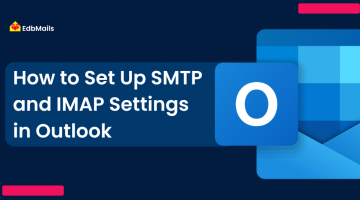Why do you want to Archive mailboxes?
All email messages in the mailbox cannot be kept indefinitely. Any server and applications will have limitation. The size of the EDB file grows will affect the performance of mail access for all the users hosted on that server. Exchange server has a practical limit on the size of the mailbox. EDB file size will have direct impact on efficiency, perform backup and restore database and maintenance of the server. Most of the times it is a constraint to limit the size of the mailboxes for the users.
Exchange server 2013 is designed in such a way where the database I/O operations are decreased. This makes decision to take commodity storage of data hardware instead of high performance storage. For some business reason for certain users may need to store more mails than the quota permitted.
To address the above issue you can archive mailboxes. Archive mailboxes are secondary mailboxes in which users can store old messages they need to keep for a longer duration. Messages might be automatically moved to the Archive mailboxes based on the retention policies set. Archive mailboxes will have lower disk I/O than the real mailboxes. You can store the archive mailboxes database on low cost high capacity storage. It’s always better to have separate Archive mailbox database instead of storing with the Primary storage.
How to create Archive mailbox in Exchange server 2013?
1. Create an Archive database.
If you want to have the archive mailboxes separate from the primary mailboxes, you will have to create a mailbox database for storing archive mailboxes.
Open Exchange Administration center.
Click on server tab
Click on the Databases
displays the list of current databases.
Click on plus icon
displays the new database window.
Enter a name of the database.
Click on the browse button and specify the name of the Exchange server on which the database should reside.
Set the Database file path and path for the transaction logs. Always better to have a speratre disks to store the logs.
Click Save to create Database.
Note: Archive databases are stored on the mailbox servers that not Database availability group (DAG) members.
2. Create Archive mailboxes
Click on the Recipients Tab
Click on Mailboxes
Select the mailbox for which you want to enable archiving
Click on then click Enable to enable archiving under Compliance section.
Archive storage window will open.
Click on the browse button and select the database which was created for archive mailbox.
Click OK to create the Archive mailbox.
3. Create archive for multiple mailboxes
Select the multiple mailboxes in recipients
Click on enable archive under compliance section.
Archive storage window will open.
Click on the browse button and select the database which was created for archive mailbox.
Click OK to crate the Archive mailboxes.
When you have archive database linked to the primary database, the archive mailbox appears in the outlook
Automated message archival
Automate the archival process using Messaging Records Management. This works by assigning a series of retention policy tags to default folders such as the inbox. User can assign personal tags to individual items he wishes to retain the messages. Managed Folder Assistant periodically analyzes the contents of the mailbox and processes messages according to the retention policies applied.
Archive mailboxes are an effective solution for you to provide your users mailboxes with long-term storage capabilities, without impacting your Exchange primary storage.



